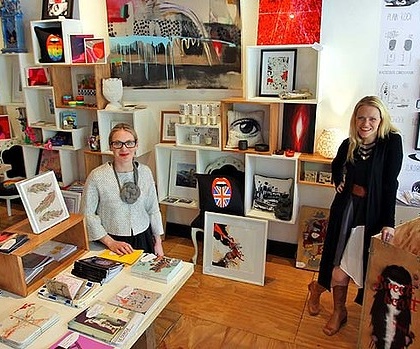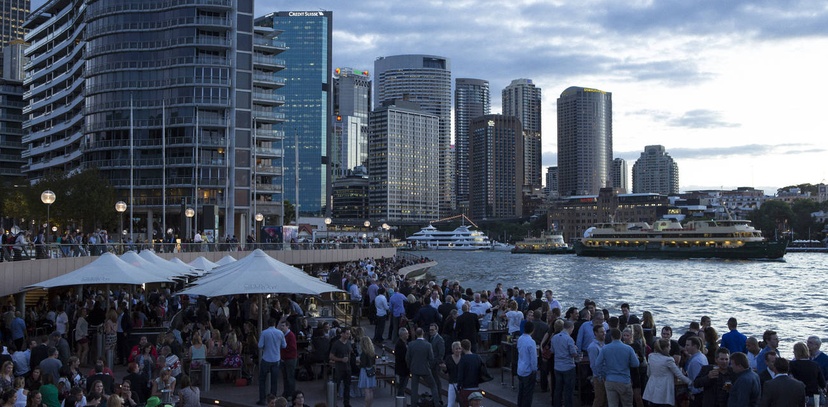

Martin Stewart-Weeks considers the problem of 'people-less' urban design strategies, and takes a look at how Sydney is proposing to bring the human scale back to city-making. This article is part of the Social Life of Cities series with the Urban Times.
A couple of years ago, I was in the audience at a conference in Shanghai on urban innovation at which Geoff Mulgan spoke. At the time, Geoff was the director of social innovation incubator The Young Foundation and has since taken up the role of CEO of the UK's National Endowment for Science, Technology and the Arts or NESTA.
Geoff gave a great presentation in the course of which he posed a blunt and slightly awkward question. In all of the expositions of the art and practice of contemporary urban design and innovation, there seemed often to be something missing, a gap best summed up by the question "where are all the people?" Visions and strategies and diagrams and glossy PowerPoint presentations paint more or less alluring pictures of the urban future we might inherit, but few seem capable of wrapping themselves around a more mundane, but more compelling vision about the way people actually lived, or wanted to live. Where, indeed, are all the people?
Even though we know that cities are all about the people who live in them, it's surprising that so much of the conversation about urban innovation and urban sustainability struggles to engage the human dimension. Why is it that the social life of cities, which most of us would accept intuitively as the foundation for all of the other lives that cities offer, often seems to struggle for recognition and attention?
I live in Sydney and work primarily in the Asia-Pacific region. That means I spend a fair bit of time in some of the world's great cities - Shanghai, New Delhi, Sydney, Melbourne, Singapore, Brisbane, Hong Kong. What I sense is city leaders, urban planners, architects and designers-not to mention people and communities themselves-all struggling to come to terms with the human dimension of city design and living. And that struggle has become more interesting under the often disruptive influence of technology.
New modes of connectedness have amplified and accelerated disruptive ways to find information, connect to each other, organise, debate and argue, shop, bank, travel and entertain ourselves. And those new modes also afford us intriguing new opportunities to contribute to the process of decision-making that determines the priorities we pursue and the way we invest money, time and effort to make those priorities happen. We tend to experience all of that as an unsettling sense that the world has become faster, more complex, and harder to understand or control.
But the same technologies of communication and collaboration that make life faster, more densely connected and apparently more complex turn out to be part of the solution.
In Sydney, there are some good examples of ways in which technology is being factored into different strategies for innovation, urban renewal and community engagement. And almost invariably, technology blends with "office" activities to widen the mix and variety of voices and values that infuse the conversations about the social life of Sydney.
For example, the City of Sydney Council is encouraging the revitalisation of Oxford Street, one of the inner city's most important retail and cultural spaces, by providing cheap and flexible leasing arrangements for new "creative and cultural" tenants to use former offices and shops. The initiative has led to a "positive buzz" in the lower reaches of Oxford Street from Hyde Park to Taylor Square.
When the city developed its night time economy strategy under the Open Sydney banner, it consulted with over 10,000 people using a combination of traditional consultation and newer online tools. The initiative was a powerful experiment in new ways to make effective conversations with the city more central to the policy making process.
One of the outcomes was the launch of Sydney's new "food trucks app" which gives people real time information about the location of the proliferating fleet of gourmet food trucks across the city.
Sydney and other Councils (for example Randwick in Sydney's eastern suburbs) are experimenting with new apps that make it easier for citizens to comment on, or get information about, things like development applications and other council projects. These trials of new digital engagement tools are part of a growing interest in using social media, and an "app" model, to forge more direct links between councils and citizens. Clearly, these experiments are going to open up new conversations about the capacity for technology to afford greater clarity, transparency and immediacy in the citizen-council interactions which are at the core of effective governance.
This focus on the city's social life, in its broadest sense, fuses with a similarly growing interest in how the city nurtures an instinct, as well as new places and practices, for social innovation. These are often manifest in the fate of small and experimental start-up ventures which are trying to find better ways to crack entrenched and complex social problems. Not only are these challenges central to the quality of life and the character of places in which people live and work, they are also unlocking new economic opportunities and markets, including in areas like healthcare, aged and home care, education and household services.
Sydney is already home to significant activity in the social innovation space and many new organisations and movements are leading the way. For example:
In different ways, these and similar initiatives in cities around the Asia-Pacific region are exploring the intersection of urban design, technology design and social design. These initiatives are experimenting with new ways to engage the human potential of technology to create opportunities for a sense of identity, economic resilience, a more open, transparent and accountable form of government and social inclusion across often diverse communities reaching for new levels of coherence, safety and opportunity.
In a recent visit to Brisbane, I met Keiran O'Hea, the city's new Chief Digital Officer (and, as far as I know, only the second city CDO, after Rachel Sterne in New York). Clearly, Brisbane as Australia's self-styled "new world city", with its face turned firmly and ambitiously north towards Asia, is embracing the digital dimension not so much as an add-on feature to its economic, social and sustainability agenda, but in many ways as the platform on which people, place and technology combine to do things differently and to get things done.
All the evidence I see points towards the fact that, over the next few years, the social life of cities will steadily rise as a big priority for leaders, innovators and investors. This is not just because the social dimension of city innovation and urban sustainability has been somewhat neglected- it's because, as urban writers, thinkers and practitioners like Saskia Sassen explain, getting the social life of cities right in all of its dimensions - culture, community and creativity - is the inescapable prerequisite to achieving the other big economic and environmental objectives they want to achieve.
Martin Stewart-Weeks is director in the global public sector practice of the Cisco Internet Business Solutions Group (IBSG). Martin established the Australian Social Innovation Exchange, part of the global Social Innovation Exchange (SIX), which was incubated by The Young Foundation in London. He is also a director of The Australian Centre for Social Innovation or TACSI. In his work for Cisco, Martin has been part of the team, which, over the past decade has pioneered thought leadership and prototype projects that explores the impact of networked technologies and the digital economy on the life and performance of cities.
